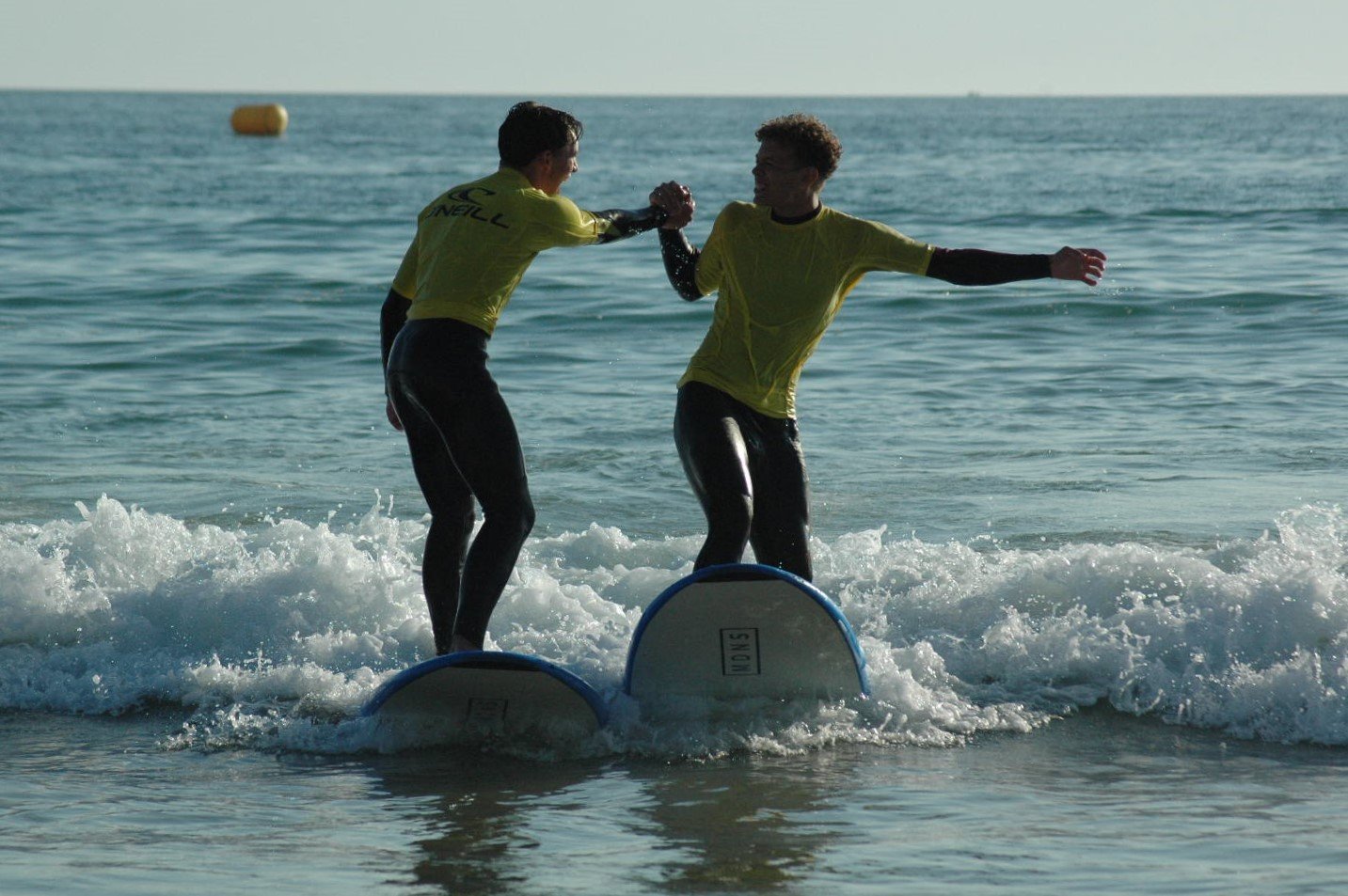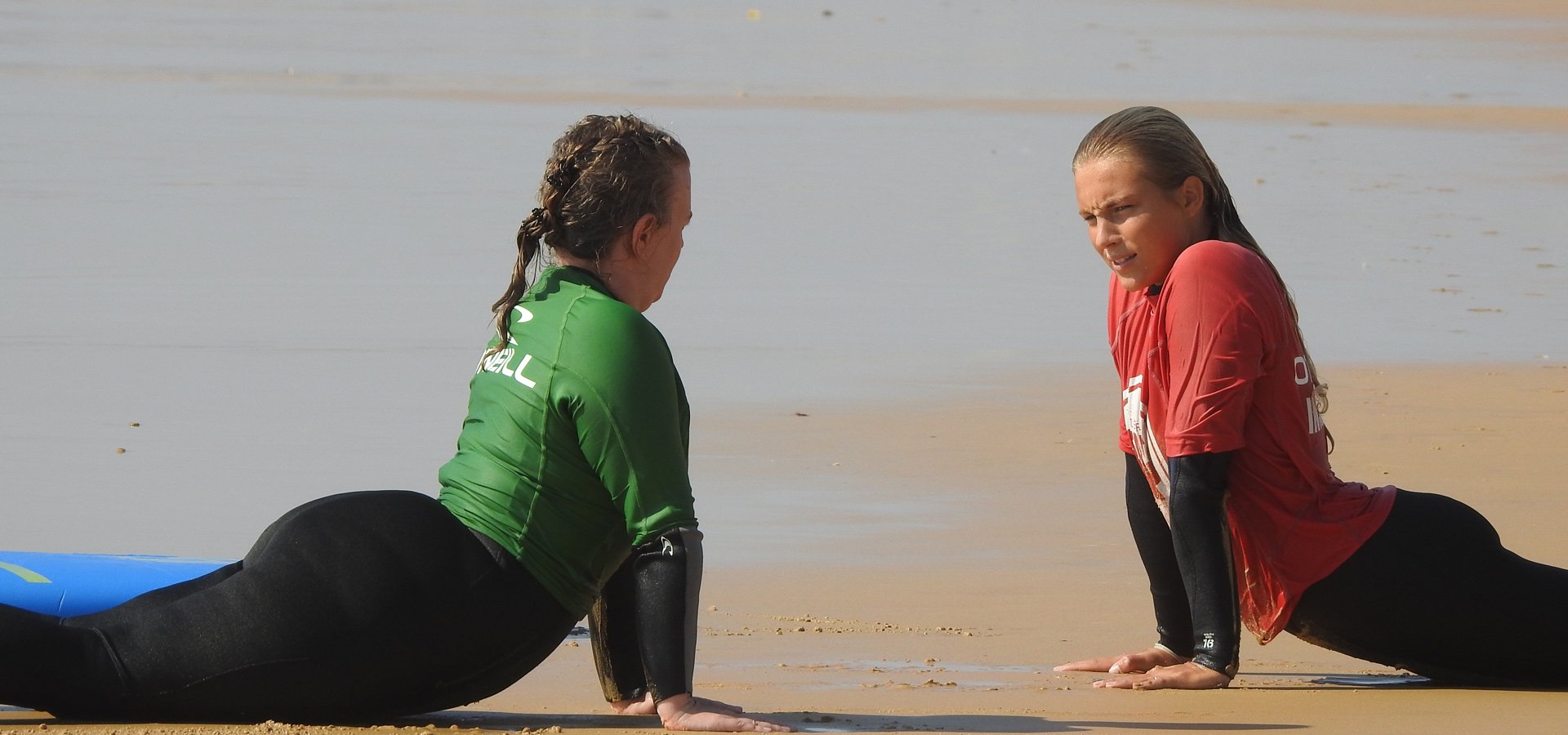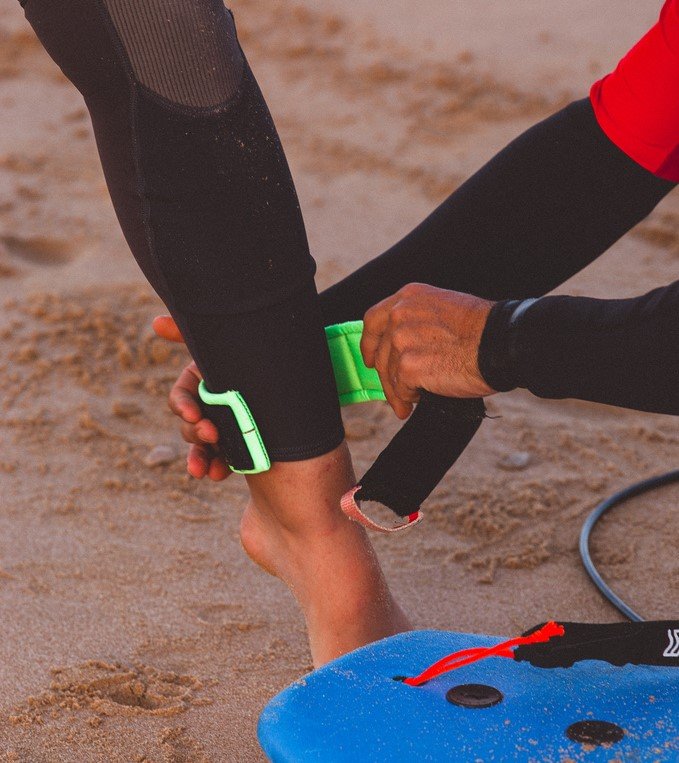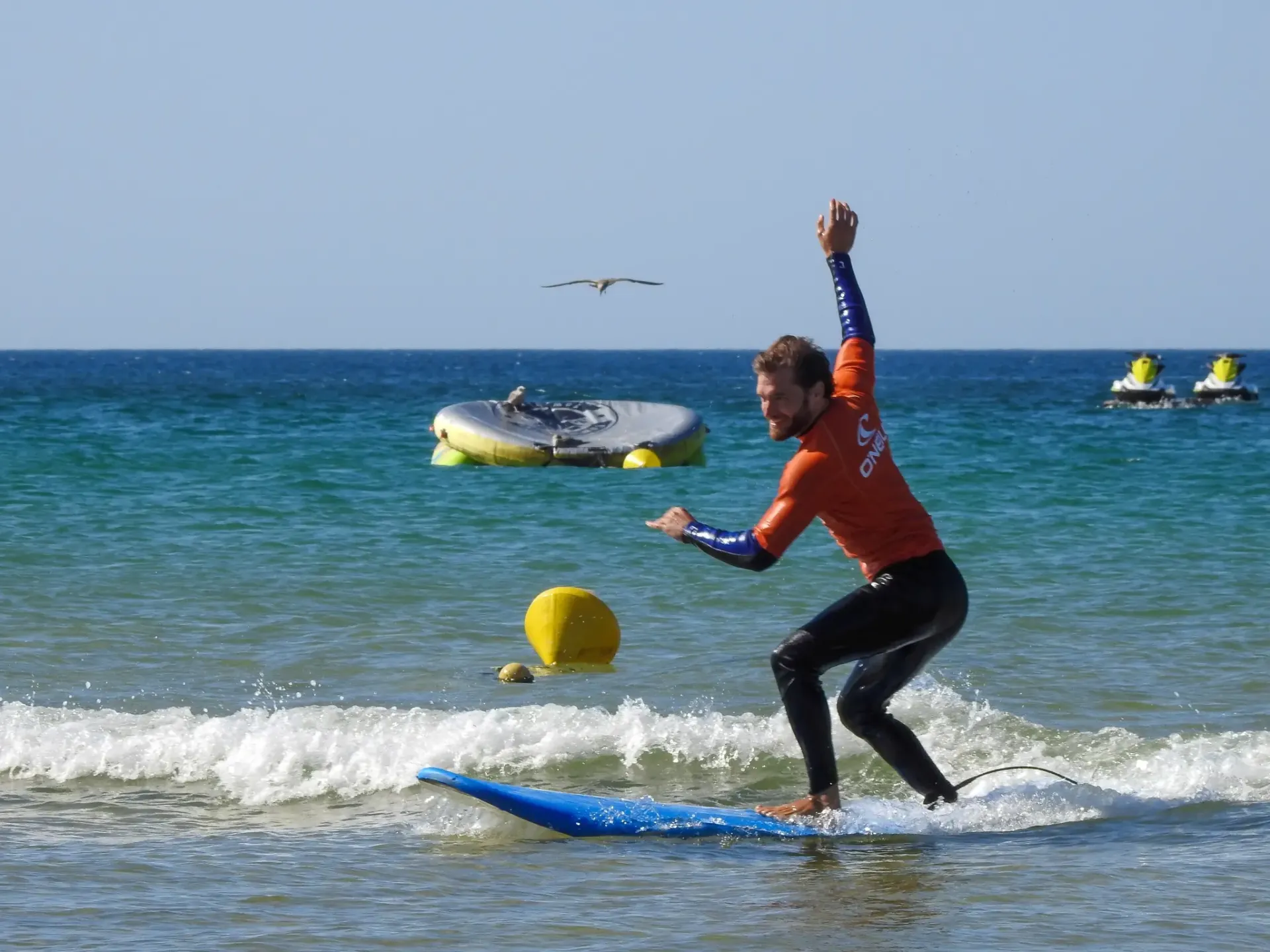Surfing is a sport with a lot of adrenaline and, at the same time, brings very healthy mental relaxation.
But like all other sports, there are some dangers and risks of injury. Here we will teach you how you can surf safely.
The main dangers involved in Surfing
There are several dangers for those who surf, the list below will be the most common in Portugal or the most common in the sport globally.
Collisions between people

It is common for surfers to collide with each other or, worse, collide with swimmers who are simply in the water.
To prevent this from happening, we suggest that, when you go to catch a wave, you move as far away as possible from the people around you. If you find that you can’t move away and catch the wave anyway, it’s better to let the wave pass than risk seriously hurting someone and yourself.
We recommend our article: Is it worth taking private surf lessons?
Rock collisions

This danger is the most imminent here on the Algarve coast due to the rocks that are found around the beach. So that no disaster happens, keep a good distance from any rocks and stay away from strong tides. If you see the tides pulling you towards the rocks, get out of the water immediately.
Fall into the reefs
Reefs give divers and surfers a stunning experience of marine life.
Catching a wave in a place that, at the bottom, has reefs is very beautiful. But it can also be very dangerous.
If you want to have this experience, I’m not going to tell you not to do it, but be as careful as possible. Catch less aggressive waves, with less chance of falling.
Wipeouts in big waves

Falling into normal waves leaves its marks and, sometimes, injuries. Now imagine falling into a big wave. That would leave great damage to your body.
Avoid doing a wipeout as much as possible and try to fight the wave until the end.
Marine animals
Although in Portugal there are no major cases of attacks by marine animals and it is not an imminent danger for residents of Portugal, globally it is one of the most worrying dangers in water sports. It is something that, when it happens, is mostly fatal or leaves permanent damage.
For this reason, when you go surfing outside of Portugal, always pay close attention and find out what to do in these cases.
Drownings
Drowning is the most common danger. There is a high chance that you will drown in any accident that happens, or in any of the dangers above. However, if you have good swimming training, this danger is easily avoided.
Most common surfing injuries
In any sport, the probability of injuries is quite high, and surfing is no exception.
Below we will list the most common injuries in surfing, their symptoms and how to prevent them.
Back and Shoulder Injuries
Back and shoulder injuries are quite common among surfers. They usually happen due to large surfing maneuvers and repetitive movements.
Symptoms — This injury begins with a sharp pain, which becomes increasingly intense. This injury brings with it difficulty in mobility, sometimes even disabling mobility.
Prevention — To prevent this injury, we suggest you practice abdominal exercises and pull-ups to improve strength and balance. The most important thing: always stretch before and after practicing sport.

Bruises
Bruises are marks that appear on the skin when there is a collision between the marked area of the body and some other thing or person.
It is something very common in our daily lives, especially when practicing sports.
Symptoms — Bruises cause pain, swelling in the area and changes in skin color.
Prevention — Avoid being close to rocks, or any area where collisions are likely, and do not surf too close to other surfers. It also prevents very sudden falls.
Cuts
Just like bruises, cuts are very common in our daily lives. They also appear due to the collision against something, but this time, something sharper.
Symptoms — The cut is a wound that can be deep. It causes swelling and redness around it. If it is not treated well, it can easily become infected.
Prevention — To prevent cuts, we suggest that you stay away from rocky areas or reefs, and that you choose good surfing equipment.
Fractures or joint injuries
Fractures are breaks in the bones and injuries to the joints happen when we exert an effort that exceeds the capacity of the tendons.
Symptoms — These injuries bring a lot of pain, swelling, changes in skin color and difficulties in mobilizing the place where the injury occurred.
Prevention — To prevent these injuries, make sure you always stretch before and after practicing sport. Practice maneuvers and movements on the ground before going to sea. Always have good posture and keep moving constantly.

Concussion
A concussion is a change in mental function or level of consciousness caused by head trauma. In other words, this injury can happen after a head impact.
Symptoms — Brain concussion ends up affecting all areas of the brain, which means there may be a temporary change in memory, concentration, balance and can even cause the person to lose consciousness for a short time.
Prevention — To prevent this from happening, be careful with falls or wipeouts. As stated above, avoid being close to rocks, reefs and being too close to other surfers. Avoid putting yourself in dangerous situations, equip yourself well and, for total protection, we suggest using a suitable helmet.
(Note: if this injury happens to you, we strongly advise you to see a doctor immediately, as it can lead to other, more serious injuries. Therefore, to avoid something worse, the injury must be analyzed and treated as quickly as possible)
How to wipeout or fall with self-protection reflexes
If you ever find yourself in a complicated situation and are unable to stay on the board, at least make sure you adopt some self-protection reflexes, such as:
- Protege a cabeça;
- Não entres em pânico;
- Mergulha e depois nada até a espuma acabar;
- Permanece de olhos abertos;
- Procura sempre a luz, para voltares à superfície.
When is it better not to surf?
When you want to go surfing, you can’t just go. You must adopt several procedures to have maximum safety when surfing such as:
- View weather conditions;
- Find out about the tides;
- Choose the most suitable location;
- Be fully equipped;
- Check the board;
- Stretching;
- And check your physical and emotional state.
If you are not at 100% in any of these options, we advise you not to go surfing.
Let’s give you some examples of when it’s better not to surf:
- It’s bad weather or even a storm.
- The sea is violent, the tides are too strong or even creating large currents. (Always check if the sea is suitable for your surfing level).
- The place is full of algae, rocks or reefs, it seems like a dangerous place.
- You’re missing some part of your equipment, you don’t have equipment or you don’t know how to choose the best equipment, so don’t go surfing until you have good equipment, 100% suitable and safe.
- If your board isn’t the right size for you, if it’s too dry, has cracks or is broken, don’t go surfing with it. (If you don’t have one recommended, learn all about how to buy surfboards here);
- If, when stretching, you notice any unusual pain or if you don’t have time to stretch.
- If you are not well physically, have an injury or if you are not well psychologically and emotionally (something that could lead you to limits or to make decisions that you would not make in a normal state).
After this article we hope you know how to prevent yourself and how to be safe when surfing.

